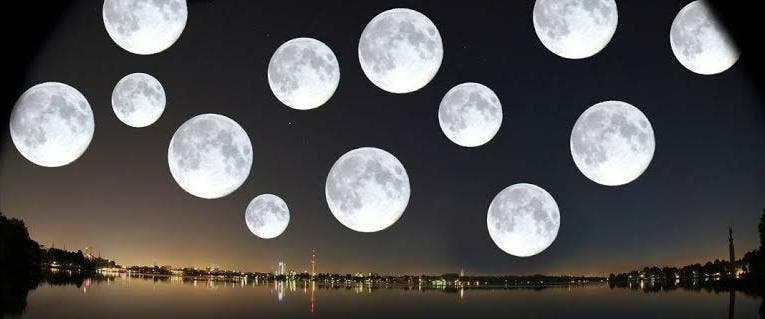
The moon is the most familiar object in the night’s sky, and one of the most studied. It’s so predictable scientists know when lunar eclipses will occur 1,000 years in advance. It even always shows the same meteorite-battered face. Still, the moon is anything but boring. Countless songs have been written about it and the tunes won’t stop until the last human stops breathing or until we find a new world with a more romantic moon — perhaps more. Jupiter has 67 moons, after all. Scientifically speaking, the moon has a lot of mysteries under its belt including perhaps the most important one: how it came into existence in the first place.
During the last decade, the science community has rallied squarely in favor of a catastrophic origin model for the Moon. According to this hypothesis, more than four billion years ago a giant, possibly Mars-sized objected called Theia smashed into a proto-Earth. As a result of the onslaught, debris eventually formed the Earth and moon. Tada!
There’s a problem with this single-impact hypothesis, though. Analyses of rock samples collected and retrieved from the moon during the Apollo missions revealed that the chemical composition of the moon is almost identical to rocks from Earth. If Earth was indeed impacted by Theia, and later formed the moon out of the debris, then we should have found some Theia material, a.k.a. telltale isotopes, in the lunar samples. That’s a big plot hole.
Israeli researchers from the Weizmann Institute of Science propose a different mode of formation. They suggest the moon’s origin can be explained by multiple but smaller impacts with the proto-Earth, not a single, giant armageddon. Each impact would have displaced debris that eventually formed into a moonlet, which at its own turn could impact again the Earth or other similarly formed moonlets. Eventually, these moonlets coalesced to form the modern moon.
“Our model suggests that the ancient Earth once hosted a series of moons, each one formed from a different collision with the proto-Earth,” co-author Hagai Perets of Israel’s Technion told The Smithsonian. “It’s likely that such moonlets were later ejected, or collided with Earth or with each other to form bigger moons.”
This is not a new idea. The multi-moon hypothesis has been around since the 1980s but previously no one was able to prove this was even possible. Armed with supercomputers, however, the Israeli researchers performed 1,000 complex simulations and found 20 of these moonlets could have combined to create the satellite that orbits Earth today, as reported in the journal Nature Geosciences.
Many moons can explain why lunar rock samples look more like Earth than anything else from the solar system. With each impact, the influence of the impactor on both the moon’s and Earth’s chemistry becomes diluted.
Last year in September, I reported the findings of researchers at the Washington University in St. Louis who made a convincing case that the Earth-Theia impact completely vaporized our planet. The study, centered around an isotopic analysis of potassium, can account for the eery similar chemical makeup of both Earth and its moon. But 4.4 billion years ago, the solar system was a very wild place. It’s far more likely that Earth got bombarded by many medium-sized impactors than a huge planetary body. So, in a way, circumstances favor the ‘many moons’ lunar formation theory.
There’s still a lot of work to do before the multi-moon hypothesis can even aspire to topple the Earth-Theia pet theory. The giant impact can explain why the moon is moving away from Earth each year by 3.8 cm or why the planet is tilted. The moonlets can’t explain these features. In fact, the Israeli researchers don’t even know yet how by which process these many moons, possibly 20 as they found, banded together to form the ‘big’ moon. We might know more once the first lunar rocks in 40 years are retrieved, hopefully in 2017, by a Chinese rover slated for launch.
“If we had more lunar samples, that would be very helpful,” co-author Raluca Rufu told The Guardian. “One giant impact should produce a more homogenous rock, but under our scenario, I’d expect the composition to vary between different regions.”






